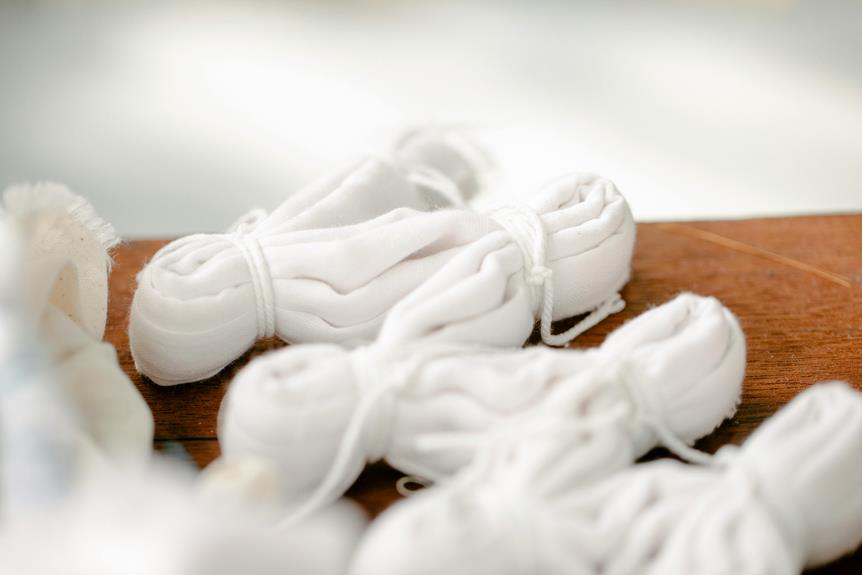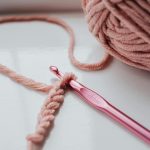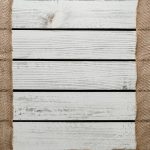When you're ready to sew with cambric fabric, it's crucial to start with the right preparation. You'll want to wash and iron your fabric first to avoid any surprises later on, like shrinkage. A sharp needle and a straight stitch are essential for achieving a clean finish. But the real challenge often lies in the details, from choosing the right tools to mastering specific techniques. As you consider these factors, remember that the nuances can make all the difference in your final product. Curious about the best practices for each step?
Table of Contents
Understanding Cambric Fabric
Cambric fabric is a lightweight, closely woven cotton material that's perfect for a variety of sewing projects.
You'll find it ideal for making garments, linings, and delicate home décor items due to its soft texture and smooth finish. This fabric typically has a slightly crisp feel, giving your creations a polished look.
When working with cambric, you'll appreciate its breathability and drape, which makes it comfortable to wear and easy to handle. It's important to note that cambric comes in various weights, so choosing the right one for your project is crucial. Lighter weights work well for blouses and summer dresses, while heavier options are suitable for structured garments.
Before you start cutting, always pre-wash your cambric to prevent any shrinkage later. This fabric can fray easily, so using a serger or zigzag stitch along the edges can help maintain durability.
When sewing, opt for a fine needle and a straight stitch to ensure clean seams. Finally, remember that cambric holds its shape well, so you can create intricate designs without worrying about distortion.
Enjoy exploring the versatility of cambric fabric in your sewing projects!
Essential Tools for Sewing
Gathering the right tools is essential for achieving professional results when sewing with cambric fabric.
Start with a quality sewing machine; a reliable one will handle the lightweight nature of cambric without causing puckering.
Next, invest in a sharp needle, preferably a size 70/10 or 80/12 universal needle. This will ensure you get clean stitches without damaging the fabric.
You'll also need high-quality thread that matches your fabric. Polyester thread works well, as it offers strength and flexibility.
A pair of sharp fabric scissors or rotary cutter will help you make precise cuts, while a cutting mat provides a safe surface.
Don't forget about pins or fabric clips; these are crucial for holding layers together without leaving marks.
A measuring tape, ruler, and fabric chalk or marking pen will assist you in taking accurate measurements and making markings.
Preparing Your Fabric
Before you start sewing, it's important to properly prepare your cambric fabric to ensure the best results. First, wash the fabric according to the care instructions, as cambric can shrink. Use cold water and a gentle detergent to maintain its softness. After washing, hang it to dry or tumble dry on low heat.
Next, iron your fabric on a low setting if necessary. This helps remove any wrinkles and makes it easier to work with. Additionally, you should check for any defects like holes or uneven edges. If you find any, it's better to address them before you start cutting.
Here's a quick reference table to help you prepare your cambric fabric:
| Step | Action |
|---|---|
| 1. Washing | Use cold water and gentle detergent |
| 2. Drying | Hang or tumble dry on low heat |
| 3. Ironing | Use a low setting |
| 4. Inspecting | Check for defects |
Sewing Techniques for Cambric
Sewing with cambric requires precision and care to achieve smooth and professional-looking seams. Start by using a sharp needle, preferably a size 70/10 or 80/12, which helps prevent fabric snags. Choose a lightweight thread that matches your fabric to keep seams discreet.
When you're ready to sew, opt for a straight stitch, adjusting the stitch length to around 2.5 to 3 mm. This length provides enough strength without compromising the fabric's delicate nature. To prevent fraying, consider using a zigzag stitch or a serger on the raw edges.
Always pin or use fabric clips to secure layers before sewing, ensuring everything stays aligned. If you're working with curves, clip the seam allowances to help the fabric lay flat without puckering.
Press your seams gently as you go, using a low heat setting to avoid scorching the cambric.
Caring for Your Creations
Caring for your cambric creations ensures they maintain their beauty and longevity, so follow these simple steps to keep them looking fresh.
First, always check the care label before washing. Most cambric fabrics can be machine washed on a gentle cycle with cold water. Avoid using harsh detergents, as they can fade colors and weaken fibers.
After washing, air-dry your items if possible. If you need to use a dryer, choose a low heat setting to prevent shrinkage.
When it comes to ironing, use a low to medium heat setting, and consider placing a cloth between the iron and the fabric to avoid scorching.
For storage, keep your cambric creations in a cool, dry place, away from direct sunlight to prevent fading. If you're storing items for an extended period, consider using breathable garment bags to protect them from dust and moisture.
Lastly, always treat stains immediately. Blot the stain gently with cold water and a mild detergent, but avoid rubbing, as this can damage the fabric.
Frequently Asked Questions
Can Cambric Fabric Be Used for Outdoor Projects?
Yes, you can use cambric fabric for outdoor projects, but keep in mind it's lightweight and may not withstand harsh conditions. Consider using it for lighter items like picnic blankets or breathable summer accessories instead.
Is Cambric Fabric Suitable for Beginners?
Yes, cambric fabric's lightweight and smooth texture makes it ideal for beginners. You'll find it easy to handle, cut, and sew, allowing you to build confidence while creating simple projects like pillowcases or lightweight garments.
How Does Cambric Compare to Other Lightweight Fabrics?
Cambric's smooth texture and breathability set it apart from other lightweight fabrics. You'll find it more structured than chiffon but softer than cotton lawn, making it a versatile choice for various sewing projects.
What Types of Patterns Work Best With Cambric?
When choosing patterns, opt for simple designs like A-line skirts or blouses with minimal detailing. They'll showcase cambric's lightweight drape beautifully, allowing you to create elegant, comfortable pieces that flow effortlessly with your movements.
Can Cambric Fabric Be Dyed Easily?
Yes, you can dye cambric fabric easily. Just choose a fabric dye compatible with cotton, follow the instructions, and immerse the fabric. You'll achieve vibrant colors that enhance your projects beautifully. Enjoy experimenting!
- How Does Ring Spun Cotton Affect Garment Fit and Shape Retention? - August 13, 2024
- What Are the Challenges in Producing Ring Spun Cotton? - August 13, 2024
- Is Ring Spun Cotton Suitable for Plus-Size Clothing? - August 13, 2024







